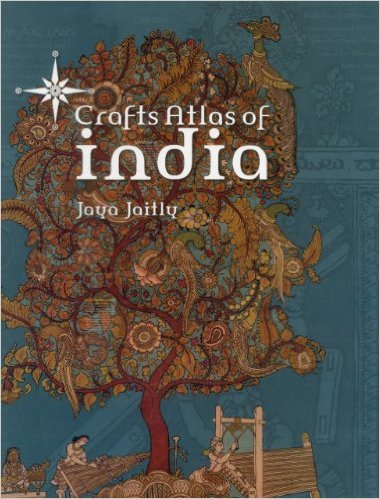I always have two open books on the round antique table in my hallway, chosen for their illustrations and subjects. They vary from month to month. There is a small horn-rimmed magnifying glass so visitors can examine the intricate details of courtly life in the Azimuth Edition of Shah Jahan’s Padshahnama or the magical Machlipatnam kalamkari Tree of Life in Martand Singh’s Handcrafted Indian Textiles. Another week there could be Pauline van Leyden’s sensitive photographic collages of Rajasthan or B.N. Goswamy’s Nainsukh Of Guler. Everyone, from visiting friends to the plumber and the policeman checking my passport details, stops to take a look—most find it difficult to pull themselves away. A universal favourite has been Aditi and M.R. Ranjan’s amazing Handmade in India, a gloriously illustrated and detailed encyclopedia of Indian Crafts, co-published a few years ago by NID and the Development Commissioner (Handicrafts) Office. Now Jaya Jaitly’s vibrant Craft Atlas Of India will also find a place. The two books have much in common—including their almost overwhelming weight and volume! Both are a compendium of Indian craft traditions; both group these geographically rather than by technique or material. This makes sense since so many Indian crafts owe their origin to local socio-cultural practice, or the availability locally of a specific raw material.
June 2013, volume 37, No 6

